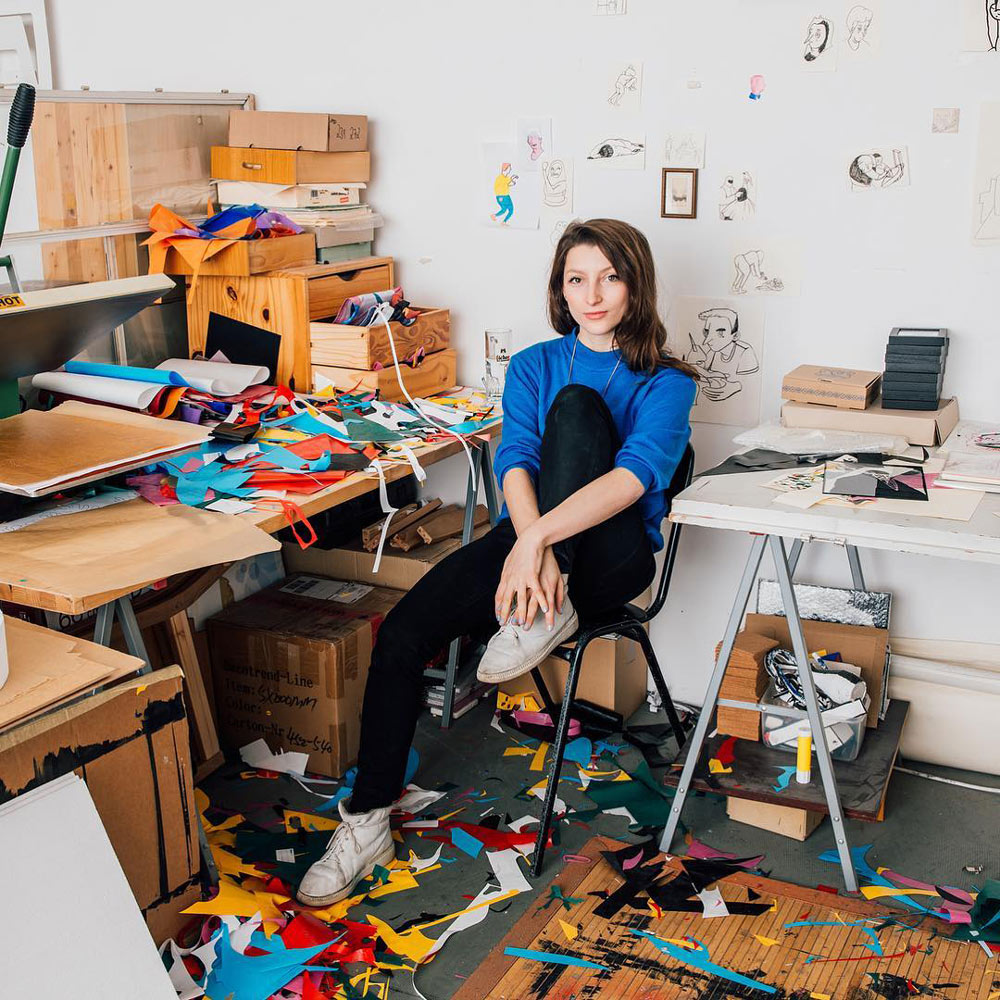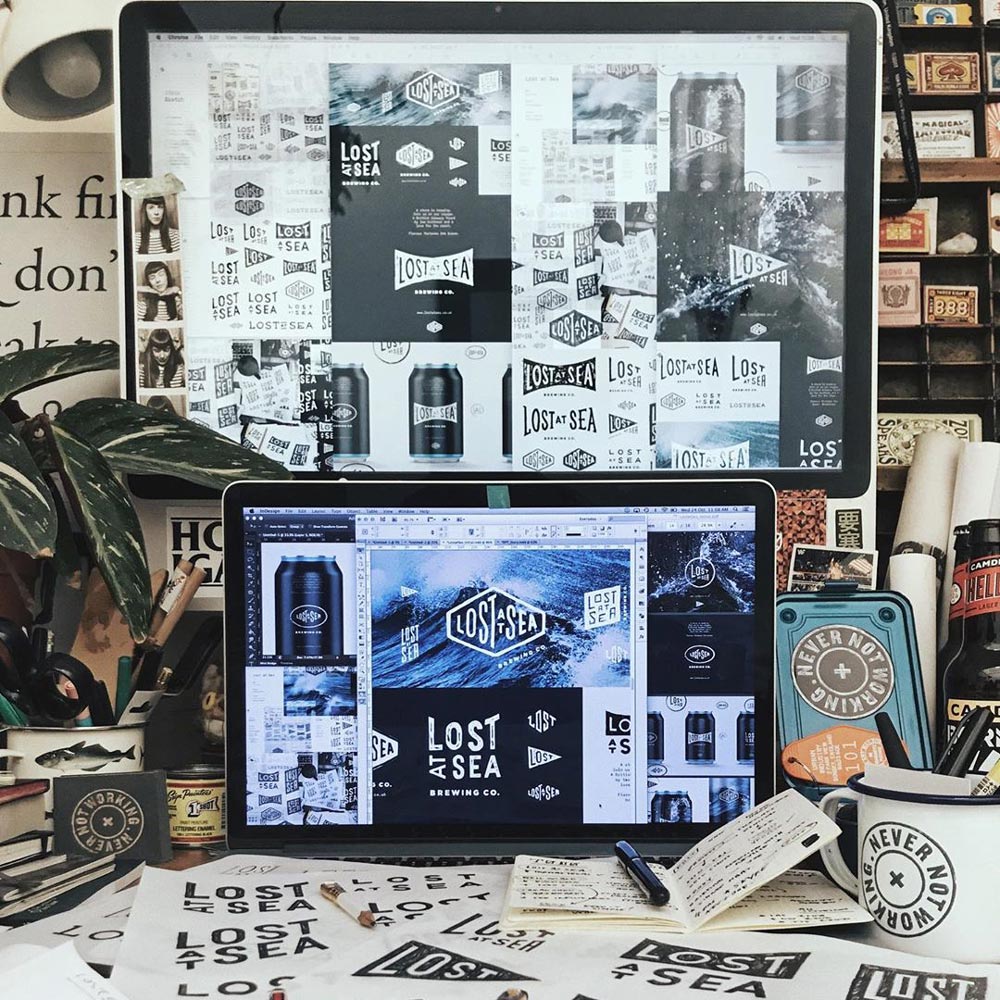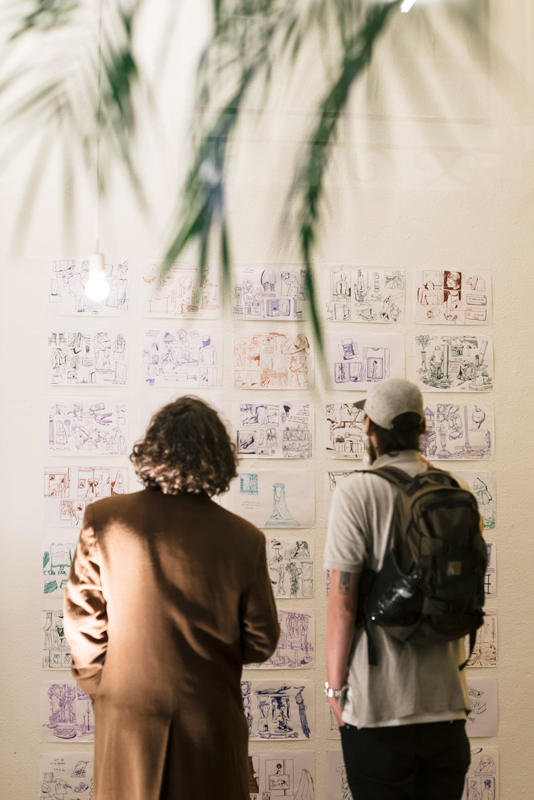On the face of it, working from home is a dream. The longest commute you’ll have is from your bed to your desk, you’ll never be bothered by annoying coworkers, and you can take your lunch break whenever you feel like it. Speak to most freelancers however, and it’s not necessarily so straightforward. They know all about the pressure to be always on, and always at your desk, as well as the uncomfortable feeling that your job is slowly bleeding into your home life. For many people, it can also be an isolating experience that lacks the social interaction office workers take for granted. But if you prefer the quiet of your own space to a shared studio, or can’t afford a standalone workspace, there are ways to stay sane.
Establishing Boundaries
For illustrator Nadine Kolodziey – who spends half her time working from a studio in Frankfurt and the other half from her home in Berlin – it’s all about establishing boundaries and sticking to them. “I set a plan from nine to seven, often it’s longer and often it’s at the weekends, but these are my ‘opening times’,” she told us. “It’s important, even in your home office, to be structured and have a separation of free time and working time. If you’re at home it’s difficult not to get distracted by the laundry, or going out for lunch or something. It’s good to have a time frame within your work schedule.”

Kolodziey says it helps to create some simple rituals that kick the day off – like walking the dog, or going out for a coffee. “It’s important to have this moment of, ‘Oh, OK, now work time is starting’,” she says. “Sometimes I go to the bakery over the street, so I have a reason to get fully dressed, go outside, get some fresh air, and have a mindset switch of ‘OK, I’m going to work, even though I’m at home’. It’s a psychological trick, but it works quite well.”
Divide Up The Day
Even once you’re into work mode though, it can still be hard to ignore distractions. For Kolodziey, who shares her flat with friends, it’s sometimes difficult to avoid the temptation of chatting in the kitchen with her housemates. For this, she recommends using a work clock which divides the day up into sections of time, including periods to work, browse memes, have a snack, go for a walk and socialise.
By planning in parts of the day that aren’t focused on work, it makes it easier to avoid distraction, and also make sure you aren’t glued to the same spot for eight hours a day. To make sure she sticks to it, Kolodziey says she sets an alarm to remind her when it’s time for breaks. She also tracks the amount of time spent on different clients across the day, as a reassurance of just how much work she’s getting done.

You shouldn’t be a slave to your work, it’s more like a partner
“It’s about mixing your urges as a human with your duties as a working person,” she says. “Lunch breaks are really important to reset your mind and plan what’s coming next, so I usually do a coffee break at 11, a lunch break at 1, and dinner around 7. It’s not super strict, so sometimes it will shift slightly. But it’s important to really get out of the zone, because if you eat a sandwich while still working, you work for so long your focus drifts.”

“You shouldn’t be a slave to your work, it’s more like a partner,” she adds. “You can pressure yourself short term if you have a difficult project, but if you do that longterm you won’t be happy, and you can feel that everything is created under pressure.”
Flexible Hours
For freelance graphic designer Josh Saunders, it’s important that home workers don’t feel imprisoned at their desk, but instead take advantage of having flexible hours. This means if creative block strikes, it’s OK to step away and go for a walk, or play video games, and return to a project later on. Even small distractions – he sometimes plays with a kendama for ten minutes – can help take the pressure off.

“A former creative director of mine would always encourage me to take a walk around the block,” he says. “It could be a few minutes, or 20 minutes, but that can set a whole new precedent. If you have a dog, or a buddy to grab a coffee with, then take a stroll and talk about anything else. When you come back you’re refreshed, and you feel like solving problems in a different light.”
Take Your Work Space Seriously
It’s all too easy for home workers to focus so narrowly on their job that they ignore everything else. And without the psychological remove of a commute to and from the office, it’s easy for work to take over your home environment. For Saunders, who’s worked from various home spaces over the years, it helps to create a clear divide.
“Draw a line between where you eat, sleep, watch TV, relax and see your friends, and your work space,” he says. “For me it was a desk that was either in my bedroom, or in my most recent apartment in the corner of my living room. That’s where my work was. If it was a Sunday or a late night I could move over to the sofa and work on my Macbook, but actually having a desktop computer – however old school that sounds – felt like I was, not tied down, but definitely in a work environment.”

Treat it as an official business, because it’s a company you’re running there
Kolodziey is also familiar with this, as she works from a desk space in her bedroom. To create some separation she’s divided the space up into two zones, using a bookshelf as a “visual border.” The illustrator emphasises the importance of taking your work space seriously, so it feels like a proper studio, rather than just an occasionally used table.
“Treat it as an official business, because it’s a company you’re running there,” she says. “It’s good to give it that respect, and also for your body to have the same respect where you find the yin and yang of feeling comfortable but still being at work.”

Staying Connected
Of course, however carefully you plan your workspace, one of the biggest challenges of working from home is the feelings of loneliness it can prompt. For Saunders, social media can be a good way to maintain connections with others, while Kolodziey prefers real life meetups. She suggests freelancers consider their home as more of a base, and plan meetings around that.

“I really like to exchange with people and get different perspectives, or talk about something completely different from my field or area,” she says. “If I have appointments with partners or collaborators I don’t feel that lonely. It’s a bit more dynamic. Working from home for me means meeting other people in a working space or cafe to plan a project or discuss progress.”
Ultimately, working away from an office is a fact of life for many self-employed creatives, designers and artists. By dividing your space carefully, creating a workable timetable, and adding rituals that help structure to your day, you can enjoy the freedom of remote working, without feeling that work is taking over your life.
Catch the last article in our ‘How To’ series? If not, read it here: How To Handle Creative Compromise






